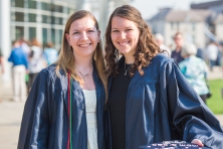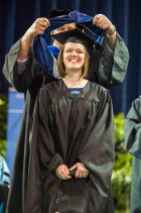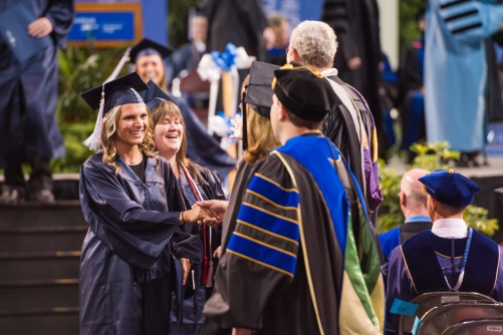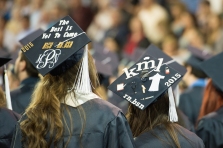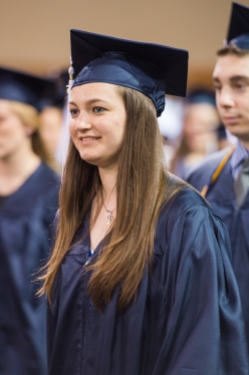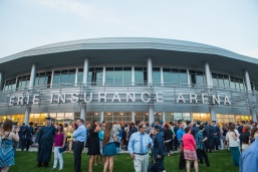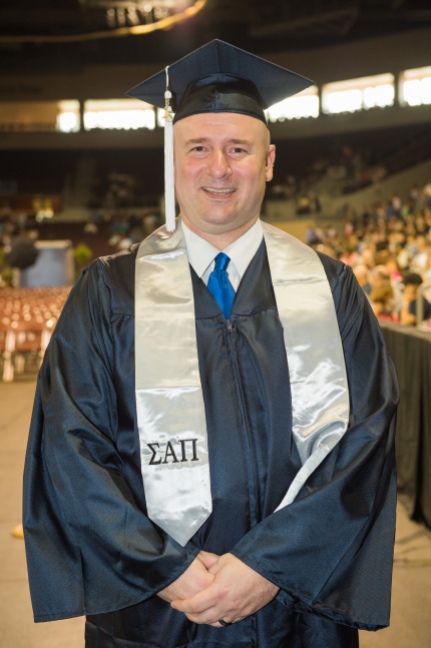By Heather Cass
Publications Manager, Office of Strategic Communications, Penn State Behrend

Dr. Peter Grant ’75
As a child growing up on the bluffs overlooking Lake Erie’s Presque Isle Bay, Dr. Peter Grant ’75 delighted in chasing fireflies, plucking cicada exoskeletons from trees, and capturing mayflies that would cling to his family’s Front Street home each summer.
“I remember waking up and seeing that there had been a mayfly hatch the night before and rushing outside to catch them,” he said. “They’re pretty slow, so they were easy to get.”
Little did he know then that those ancient winged insects would become his life’s work.
Grant, who attended Erie’s Cathedral Prep and then Penn State Behrend, where he earned an undergraduate degree in biology, was recently honored for that work with a Lifetime Achievement Award from the Committee of the International Conference on Ephemeroptera. Mayflies belong to the order Ephemeroptera.
“I was very surprised,” he said. “I still don’t believe it.”
Currently the dean of the College of Arts and Sciences and a professor of biology at Southwestern Oklahoma State University, Grant has studied mayflies for nearly four decades. He has compiled an annual bibliography on the insect for the North American Benthological Society (now the Society for Freshwater Science) for twenty-seven years and he founded and served as the editor of The Mayfly Newsletter for twenty-six years.
Over the years, he has provided many producers and authors from news organizations and publications, such as the BBC, National Geographic and The New York Times, with information about mayflies.

An adult mayfly
Getting his feet wet in Walnut Creek
Grant’s education and career has taken him from Pennsylvania to Texas to Florida to South Carolina to Oklahoma, but he still keeps in touch with the Behrend professor who encouraged his first research work. Dr. Ed Masteller, emeritus professor of biology, recruited Grant to participate in a summer research project in Walnut Creek in the summer after his first year at Behrend.
“I mostly did water chemistry work,” he said. “Later, when I was in graduate school in Texas, I actually began to study the mayfly lifecycle.”
Mayflies are part of an ancient group of insects called the Palaeoptera, which includes dragonflies and damselflies. The gossamer-winged, short-lived mayfly has never really held a candle to its zippy, flashy “cousins.”
But they stand out for a few reasons.
“Mayflies are the oldest known winged insect,” Grant said. “The ancestry goes back about 300 million years, further than any currently living group of insects.”
Despite the longevity and variety (there are more than 3,000 species of mayflies), the insect has a brief adult life. Few live more than a day or two as flying insects.
“They don’t even have any functional mouth parts or a digestive system,” Grant said. “They exist in their adult form simply to reproduce.”
Water babies
A mayfly spends the majority of its life, up to a year or more, in its immature nymph stage as an aquatic freshwater insect. They can be found at the bottom of nearly any freshwater source—creeks, rivers, lakes—in still or running water. Turn over a few rocks in the water, and you are likely to find a mayfly on one of them.
They play an important role in the aquatic food chain. The nymphs eat decomposing matter and algae in the water and serve as a food source for more than 200 species of animals, insects, and carnivorous plants.
“The nymphs recycle organically rich material back into the food chain by consuming it and turning it into mayfly tissue, which their predators then eat,” Grant said.

Mayfly nymph
Canaries in the coalmine
Mayflies typically hatch in mass, particularly the large mayflies that inhabit Lake Erie, which means swarms of them appear literally overnight and cover the sides of building near the waterfront.
There is good reason for this group hatch: They have an extremely short amount of time to meet up, reproduce, and lay eggs. If they hatched over a series of days, those late to the party would never have the chance to pass on their genes.
While not everyone welcomes the influx of flying insects to their community, they are a welcome sight for ecologists and those who care about clean water.
“Anything living in the water is challenged by pollution,” Grant said. “And nymphs are thin skinned, so it’s easy for them to absorb pollutants.”
Grant is quick to qualify that statement, however.
“There are a lot of factors that go into how big the summer hatch is and some species are hardier than others, so you can’t directly equate a big or a small hatch to water quality, but it’s a factor, for sure.”
Still hard at work
Grant continues to balance his academic responsibilities with his research work. He’s currently involved in a long-term project cataloging the mayflies of Oklahoma as well as a study looking at the population size of endangered species of mayflies and caddisflies (another group of aquatic insect) in the state.
“When people think of Oklahoma, they tend to think of flat, dusty land, but it’s one of the most ecologically diverse states in the country,” he said. “We have twelve ecological regions and tons of streams.”
Grant could not be happier with his lot in life.
“I’ve wanted to be a scientist since I was a kid,” he said. “Being a college professor gave me the flexibility to both teach and learn.”

























